The Estimation Trap in Software Delivery
Tracking estimation accuracy in software delivery leads to mistrust, fear, and distorted behaviours. Focus on customer value, flow, and outcomes, not …
Continuous Improvement is the ongoing practice of relentless reflection and adaptation, driven by empirical evidence, aimed at consistently enhancing processes, products, and team effectiveness. It embodies a commitment to incremental and measurable advancements, fostering a culture of proactive experimentation, rapid feedback, and learning to achieve sustainable and strategic business agility.


Continuous Improvement is a first principle of Business Agility, essential for any organisation seeking resilience and sustainable success in today’s complex and rapidly evolving markets. It represents an ongoing commitment to reflecting on outcomes, evaluating performance through empirical evidence, and rapidly adapting strategies based on what is learned. Rather than being a one-time initiative, Continuous Improvement becomes part of the organisational ethos, guiding leaders and teams toward more effective, responsive, and adaptive ways of working.
This principle underpins an organisation’s ability to respond swiftly to market shifts and customer needs. It encourages proactive experimentation and embraces a disciplined approach to decision-making grounded in real data and experiences. By embedding Continuous Improvement into their core culture, organisations foster environments that not only embrace change but leverage it as a competitive advantage, consistently driving greater value and innovation.
Lean thinking places Continuous Improvement at its core through the philosophy of “Kaizen,” which emphasises small, regular, and incremental improvements. Lean organisations actively seek out and eliminate waste, optimising their processes to maximise customer value. Continuous Improvement in Lean involves engaging every team member at every level to suggest and implement improvements, creating a culture of collective ownership and constant learning. By embracing this principle, Lean organisations ensure they remain agile, efficient, and adaptive in responding to changing business environments.
Scrum explicitly embeds Continuous Improvement as a foundational principle through its structured cycles of transparency, inspection, and adaptation. Every Sprint provides teams with the opportunity to reflect on outcomes and performance, using empirical evidence to inform their next steps. The Sprint Retrospective is a dedicated event specifically designed to foster continuous reflection, collaborative learning, and incremental enhancements. By making Continuous Improvement explicit, Scrum ensures that teams regularly pause, assess, and adapt, sustaining a disciplined focus on becoming progressively more effective.
In Kanban, Continuous Improvement is driven by visualisation, explicit policies, and workflow optimisation. By clearly visualising the flow of work and making bottlenecks visible, teams naturally uncover areas for improvement. Kanban encourages incremental adjustments rather than disruptive change, emphasising evolutionary rather than revolutionary improvements. Teams leverage metrics such as cycle time, throughput, and flow efficiency to inform data-driven improvements, continuously refining their workflows to increase predictability, reliability, and value delivery.
Tracking estimation accuracy in software delivery leads to mistrust, fear, and distorted behaviours. Focus on customer value, flow, and outcomes, not …
Compares “flow of value” and “flow of work” in Kanban, explaining why only validated outcomes count as value and stressing the need for evidence, …
Using data, metrics, and feedback to drive continuous improvement in teams and processes.
Explains how audience-based deployment and testing in production enable faster feedback, safer rollouts, and higher software quality by targeting real …
High work in progress (WIP) causes delays and unpredictability; improving estimates won’t help. Limiting WIP and focusing on flow is key to reliable …
Visualising workflows to identify inefficiencies and optimise value delivery.
NKD Agility helped the Ghana Police Service drive organisational change using Scrum, enabling continuous improvement, transparency, and local …
Comprehensive guide to using OKRs for shared focus, measurable outcomes, and strategic learning, including roles, events, best practices, and common …
Engineering excellence isn’t perfection, it’s continuous improvement, clean code, and fast feedback. Unlock true agility with modern Agile and DevOps …
Using hypothesis-driven approaches to test ideas and validate assumptions in agile workflows.
Scrum can drive organisational change, not just product features, by using backlogs, teams, and feedback to enable real, evidence-based agility across …
Minimising waste and maximising value through iterative learning and continuous improvement.
Explores how effective capacity planning shifts focus from individual hours to system-level flow, using Lean and Agile principles to improve …
A weekly one-hour mentorship for engineering teams to improve code quality, delivery predictability, and team culture through practical, …
Explains how Scrum teams can strategically allow unfinished work to flow across Sprint boundaries, enhancing throughput, responsiveness, and …
Ensuring continuous delivery of incremental improvements to users and stakeholders.
Is your engineering culture built to thrive on change? Discover how to create resilient, adaptive teams that stay ahead in a fast-moving tech world.
Explains how Kaizen’s continuous improvement principles enhance Scrum and Agile teams, with practical tips for retrospectives, workflow optimisation, …
Learn how using key metrics and visual tools like Kanban boards drives continuous workflow improvement, transparency, and informed decision-making in …
Adapting based on evidence, not assumptions, through inspection and transparency.
Explains how adopting Kaizen’s continuous improvement approach can enhance personal growth, team collaboration, and process optimisation in work and …
Manage Agile projects effectively with Azure Boards. Track work, optimise planning, and improve team collaboration.
Learn how to successfully implement OKRs by aligning clear strategy, fostering transparency, empowering teams, focusing on outcomes, and establishing …
Minimising waste while maximising learning in product creation.
Explains how the Definition of Done evolves in Scrum, aligning team practices with organisational standards to ensure consistent quality, compliance, …
Optimising how often software is deployed to enhance feedback loops and value delivery.
Building the Minimum Viable Product to test ideas and validate market assumptions quickly.
Ditch the Big Bang rewrite. Discover why sustainable, in-place change drives true engineering excellence and lasting transformation in your teams.
Explains how Windows OS updates shifted from infrequent, risky releases to safe, staged rollouts using ring-based deployment and real-time user …
A specialized product operating model for organizations adopting agile methodologies. It integrates agile practices with product management principles …
Improve clarity and readiness with Backlog Refinement. Ensure work is well-defined, prioritised, and ready for execution.
Using experimentation and validated learning to drive product decisions.
Tightening the loop between delivery and learning to ensure products meet real needs.
AI exposes that coding was never the main bottleneck in software delivery; real constraints are in system flow, team practices, and organisational …
Explains how to engineer a robust, fault-tolerant token counting server using FastAPI and PowerShell, covering error handling, retries, fallbacks, and …
Optimising the throughput of work across the value stream to improve speed and reduce bottlenecks.
Throughput is a delivery metric used to inspect how much work is completed per unit of time, enabling analysis of flow efficiency and system …
Understand the Agile philosophy and its impact on organisations. Go beyond frameworks to explore Agile as a guiding ethos for value delivery.
Unrealized Value is one of the four key value areas of Evidence‑Based Management and represents a group of measures focused on the potential value …
Unlock a smarter Definition of Done, start small, evolve standards, and build team momentum without overwhelm. Discover how progress drives …
Explores why true organisational agility needs more than Agile development, highlighting the importance of continuous delivery, quality, and removing …
Explores how Azure DevOps shifted from slow, two-year releases to rapid, continuous delivery, highlighting the benefits of fast feedback, agility, and …
Measuring individual cycle time in Kanban misleads teams, hides real bottlenecks, and harms flow. Focus on system-wide metrics like PCE, WIP, and …
Measuring individual cycle time overlooks team performance and system bottlenecks. Focus on lead time, throughput, and process efficiency to improve …
Explores why fixed best practices don't suit complex continuous delivery, highlighting adaptive approaches like audience-based delivery, testing in …
Explores how using metrics and visual tools enhances workflow transparency, helps identify improvement areas, and supports a culture of continuous …
A strategic approach to improving the flow of value through an organisation, optimising efficiency, reducing waste, and aligning work with customer …
Explores how frequent code deployments improve code quality, reduce technical debt, enable faster feedback, and support iterative, user-focused …
Explains how evidence-based management uses reliable metrics and KPIs at team and organisational levels to drive better decisions, value delivery, and …
Explores how breaking features into small experiments boosts software delivery, enabling teams to deliver more features, reduce risk, and improve …
Explores how empowering Agile teams to adapt their processes boosts flexibility, continuous improvement, collaboration, and maximises value and return …
Learn how to spot fake Agile practices using six key questions from the US Department of Defense, and discover steps to assess and improve true Agile …
Learn how Candan strategies use flow metrics and transparency to reveal workflow issues, drive continuous improvement, and support data-driven …
Learn how to assess and improve your organisation’s innovation capability using evidence-based management and key metrics like technical debt, …
Explains how to gather key metrics for evidence-based management in software organisations, focusing on value delivery, time to market, and ability to …
Techniques and strategies for improving operational efficiency and delivery.
Learn how to achieve organisational agility by tailoring change to your unique context, building a guiding coalition, and engaging all stakeholders in …
Explains how evidence-based management helps Agile teams use data and key metrics to measure progress, make informed decisions, and drive continuous …
Explores how immersive learning in product management blends practical assignments, evidence-based metrics, and reflection to drive real …
We partner with businesses across diverse industries, including finance, insurance, healthcare, pharmaceuticals, technology, engineering, transportation, hospitality, entertainment, legal, government, and military sectors.

MacDonald Humfrey (Automation) Ltd.

Hubtel Ghana

New Signature

Higher Education Statistics Agency

ProgramUtvikling

Kongsberg Maritime

DFDS
CR2

Schlumberger

Slicedbread

Capita Secure Information Solutions Ltd
Boxit Document Solutions

Teleplan

Alignment Healthcare

Philips

SuperControl

Lockheed Martin

ALS Life Sciences

Royal Air Force

Washington Department of Enterprise Services

New Hampshire Supreme Court

Department of Work and Pensions (UK)

Ghana Police Service

Nottingham County Council

Slicedbread

Schlumberger

Philips

Flowmaster (a Mentor Graphics Company)

Slaughter and May

Emerson Process Management